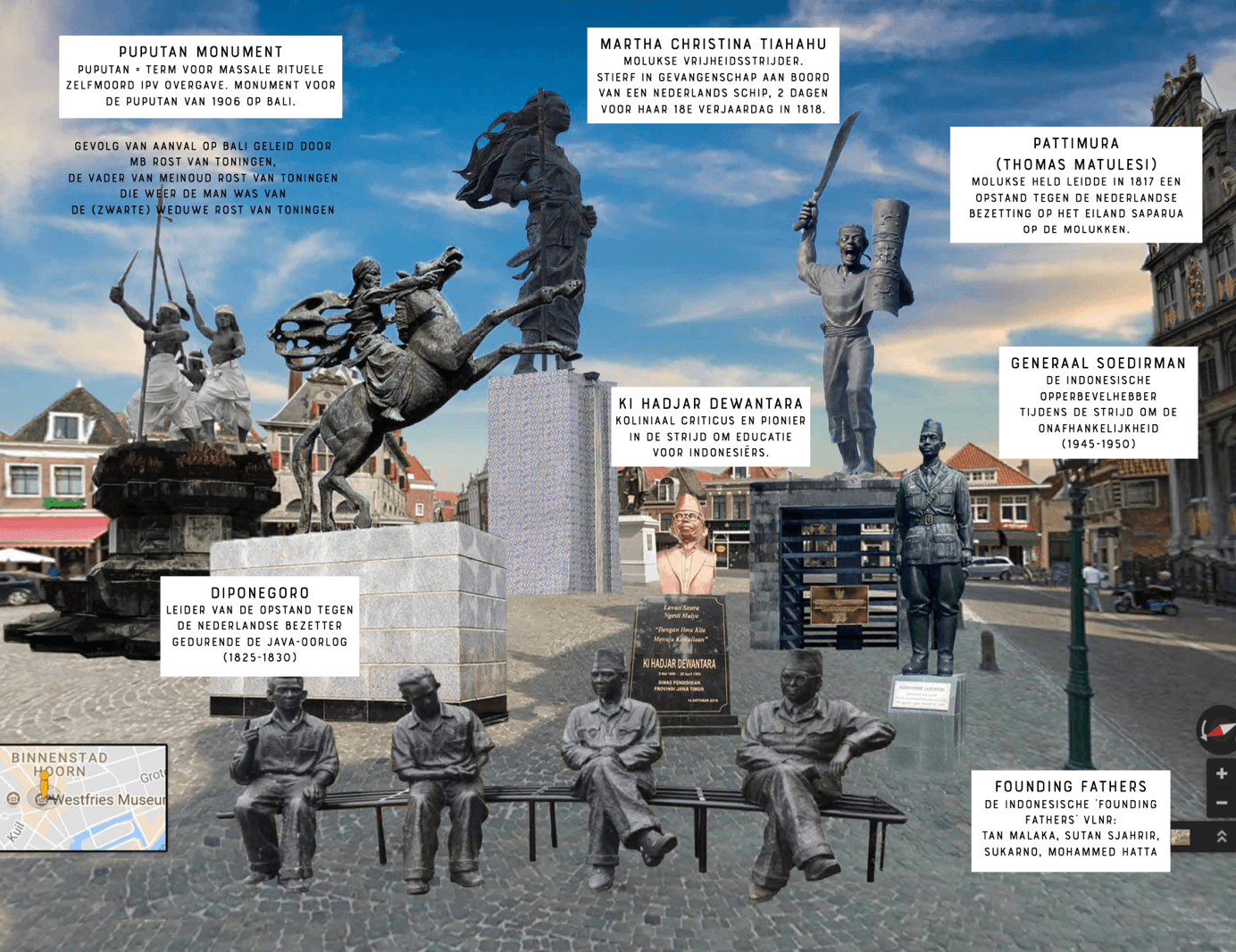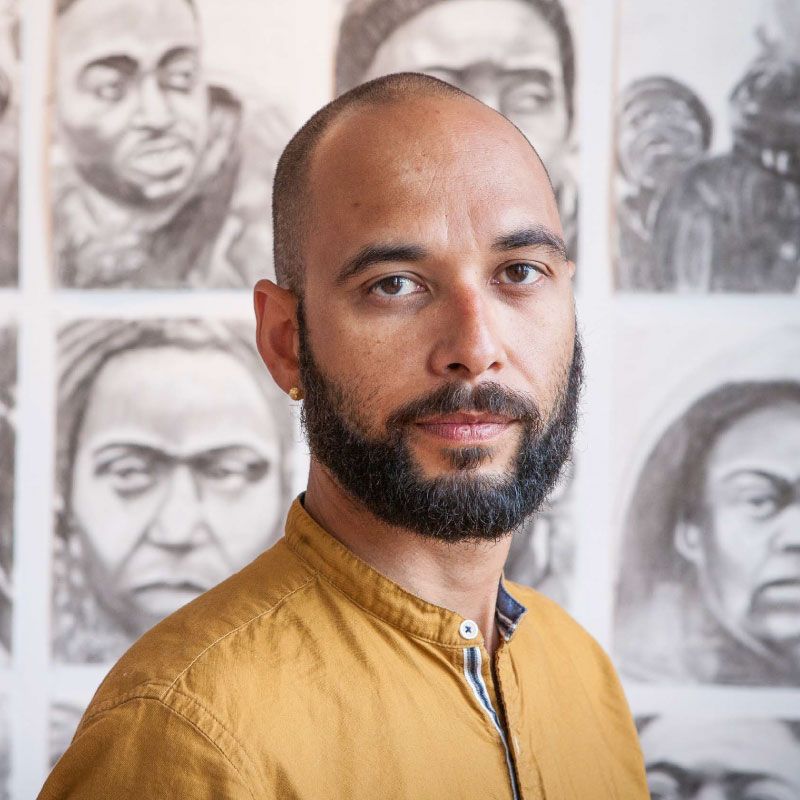Interview Raul Balai - Counter statues
- Anna Odink
Raul Balai is an artist based in Amsterdam. In October 2022, a year before the publication of the report Unstable Pedestals. Controversial monuments in public spaces, Balai gave a lecture at a conference of the Royal Netherlands Academy of Arts and Sciences (KNAW). He called on artists to radically recontextualize controversial statues in public spaces. The KNAW adopted this recommendation in the report.
In 2022, Balai made a conceptual proposal in which he provided the statue of J.P. Coen in Hoorn with a new context. In the proposal, Balai placed counter-monuments around the controversial monument. “If I were an activist, I would do something else with the controversial statues in public spaces in the Netherlands. I would ensure that some statues wouldn’t be here anymore. But I am an artist, I choose to take people into a story. With the proposal, I try to change our understanding of our history. In doing so, I also play with perspective and with the idea that the Dutch have of the size of our country. The Netherlands is so much smaller in terms of area than Indonesia. The Netherlands has had a few colonial rulers, while there have been so many more freedom fighters."
This play with perspective can be seen clearly in his conceptual proposal from 2022. For example, Balai placed the Moluccan freedom fighter Martha Christina Tiahahu on the highest pedestal; she towers above all other statues. The heroes on the pedestals represent various forms of resistance and are not only about individuals who played a role in Dutch history. We see, for instance, a statue of Diponegoro, leader of the uprising against the Dutch occupiers during the Java War (1828-1830), and a bust of Ki Hadjar Dewantara, who fought for education for Indonesians.
Conceptual proposal by Raul Balai, new statues around J.P. Coen, 2022
In the Netherlands, according to Balai, the approach to our cultural heritage differs significantly from that of most other countries. “In neighboring countries, as well as in the US, statues have been pulled from their pedestals much more quickly and frequently in recent years. Change happens differently there, and especially more rapidly in that regard. In the Netherlands, we see little change in the streetscape or substantive debate based on facts. I notice that there is generally little acceptance for opinions outside the canon. It is a myth that the Netherlands is an open society; here, too, there is a stubborn adherence to a conservative (ethno)nationalism."

